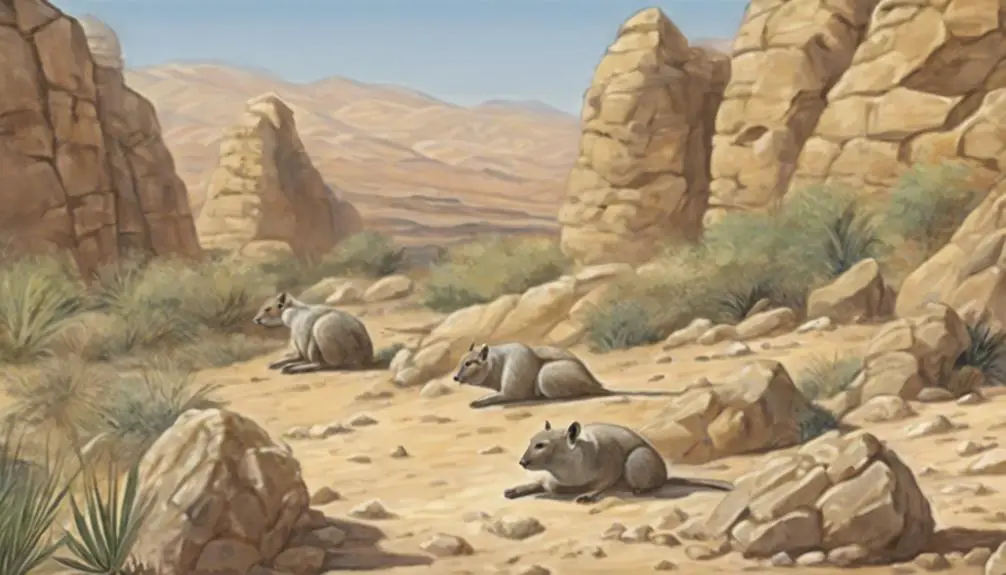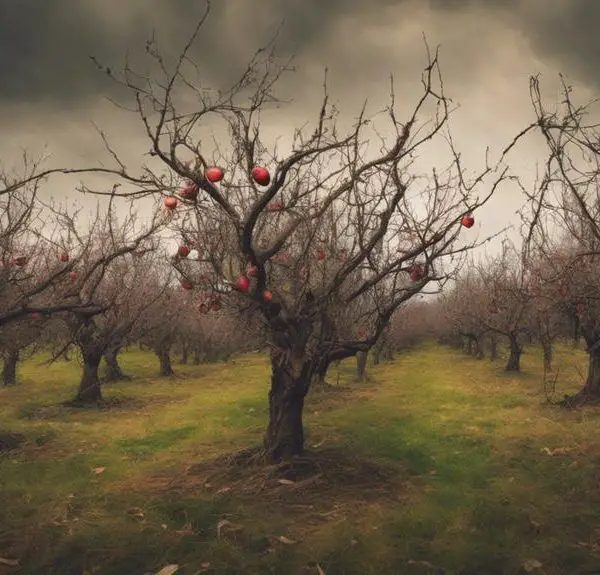The Bible's conies, small yet wise creatures, offer intriguing lessons on survival and resilience, inviting a deeper exploration of their symbolic significance.

What Are Conies in the Bible
In your exploration of Biblical texts, you've encountered lions for their strength and doves for their peace, but have you ever stumbled upon the conies? These modest creatures, mentioned in the Bible, carry with them a wealth of symbolism and lessons that often go overlooked.
As creatures that made their homes in rocks and were noted for their weak physicality yet wise survival strategies, conies invite a deeper understanding of ancient wisdom and its application today. Uncovering the significance of conies could offer you a fresh perspective on resilience and resourcefulness, a discussion surely worth pursuing further.
Key Takeaways
- Conies in the Bible are identified with modern rock hyraxes, small herbivores living in mountainous terrains.
- They symbolize wisdom and reliance on divine protection, despite their physical vulnerability.
- Their habitat and social behaviors reflect strategic survival and adaptability in harsh conditions.
- Conies offer lessons on resilience, faith, and the importance of community for protection and sustenance.
Identifying Biblical Conies

In the context of the Bible, conies are identified as small, mountain-dwelling creatures, often equated with the rock hyrax in modern taxonomy. You'll find that their significance in scripture, while perhaps modest, opens a window into the natural history and ecology of the ancient Near East.
Focusing on conies' diet, these animals are herbivores, primarily feeding on a variety of vegetation found in their rocky habitats. This detail isn't just a footnote in their description but a crucial element in understanding their ecological role and survival strategies in such harsh terrains.
Drawing modern parallels, the dietary habits of the rock hyrax today mirror those of the biblical conies, reinforcing the identification of the two. This parallel extends beyond mere diet; it encompasses their way of life, social structures, and environmental adaptations, providing a tangible link between the ancient text and contemporary wildlife studies. This connection not only enriches our understanding of biblical references but also highlights the continuity of natural history across millennia.
Through this lens, the study of conies becomes a multidisciplinary inquiry, bridging theology, archaeology, and biology.
Conies in Ancient Texts

Several ancient texts, beyond the Bible, mention conies, offering valuable insights into their perceived roles and significance in early societies. Understanding how conies are depicted in these sources illuminates their cultural and ecological import, showcasing the breadth of ancient knowledge about these creatures.
Here are three key points to consider:
- Ancient Translations: The way conies are referred to across different cultures provides a fascinating study in ancient translations. Words used to describe them often reveal how these animals were perceived, whether as symbols of wisdom due to their elusive nature or, conversely, as emblems of vulnerability.
- Textual Variations: Variations in ancient texts underscore the challenges in pinpointing the exact species referred to as conies. These textual variations often stem from the translators' interpretations and the evolving understanding of taxonomy over centuries.
- Cultural Significance: Conies held varying degrees of cultural significance across ancient civilizations. In some, they were considered clean and suitable for consumption, while in others, they were deemed unclean or were associated with specific myths or deities, reflecting a rich tapestry of beliefs and traditions.
Habitat and Behavior

Understanding the habitat and behavior of conies is crucial to comprehending their ecological role and survival strategies within their natural environments. These creatures predominantly inhabit rock dwellings, which provide them with shelter from predators and extreme weather conditions. Their choice of habitat is strategic, emphasizing the importance of safety and the availability of nearby food sources.
You'll find that conies are selective in their dietary habits, primarily feeding on plants, herbs, and fruits available in their rocky terrains. This diet isn't only a reflection of their ecological niche but also a testament to their adaptability. They've evolved to thrive on the sparse vegetation that their arid or semi-arid habitats afford them.
Their behavior further underscores their survival tactics. Conies are social animals, living in colonies within their rock dwellings. This social structure aids in their protection against predators, as there are more eyes to watch for danger. Additionally, it facilitates the sharing of resources, especially food, during scarce periods.
Symbolism and Interpretations

Exploring the symbolism and interpretations of conies in the Bible reveals deeper layers of meaning beyond their physical existence and ecological role. This analysis brings to light the profound messages these creatures embody within the scriptures, offering insights that resonate even in contemporary contexts.
- Wisdom in Weakness: The Bible portrays conies as weak yet wise creatures, adept at finding refuge in rocky crags. This paradoxical strength in vulnerability mirrors spiritual teachings on humility and reliance on divine protection rather than one's own might.
- Sustenance and Provision: Examining conies' diet, which consists mainly of herbs and plants, symbolizes a simple yet providential sustenance. This dietary habit underscores a theological motif of reliance on God's provision, reflecting a life of faith and trust in the divine to meet one's needs.
- Modern Parallels: The survival strategies of conies, despite their fragile appearance, offer modern parallels for navigating life's challenges. Their behavior encourages a reflection on how wisdom, resourcefulness, and faith can guide individuals through adversity, emphasizing spiritual over physical resilience.
Lessons From the Conies

Drawing from the biblical depiction of conies, we can extract valuable lessons on resilience and faith that are applicable to our own lives. These creatures, though seemingly weak, embody an extraordinary wisdom in their survival strategies, teaching us the importance of adaptability and the strength that lies in perceived vulnerability. The conies' wisdom, as illustrated in scriptures, serves as a metaphor for the human condition, urging us to find strength in our faith and the communities we build.
The survival strategies of conies, primarily their choice to dwell in rocky fortresses, enlighten us on the significance of seeking solid foundations in times of uncertainty. This behavior underscores the importance of creating secure environments for ourselves, both spiritually and emotionally. Just as conies navigate their challenging habitats with grace, we're reminded to approach our own life's trials with a similar resilience, finding safety and strength in our faith and principles.
In essence, the lessons drawn from the biblical conies encourage us to look beyond our immediate perceptions of strength and vulnerability. They teach us that true wisdom lies in recognizing the value of our unique survival strategies and in the steadfast faith that guides us through life's adversities.
Frequently Asked Questions
How Do Modern Translations of the Bible Differ in Their Depiction or Mention of Conies Compared to Older Translations?
Modern Bible translations differ from older ones in their depiction of conies due to advances in translation methodologies and linguistic evolution.
You'll notice these versions may vary in terminology, reflecting a deeper understanding of ancient texts and languages.
This evolution ensures accuracy and clarity, bridging historical and cultural gaps.
As scholars apply new insights, the portrayal of conies, among other terms, becomes more precise, enhancing your comprehension of biblical narratives.
Are There Any Dietary Laws or Restrictions Related to Conies Mentioned in the Bible, Similar to Other Animals?
Yes, the Bible does mention dietary laws concerning conies, classifying them as unclean animals that shouldn't be eaten. This is rooted in their characteristics, as described in scripture, and doesn't change with modern farming practices.
The prohibition is similar to other dietary restrictions outlined in the texts, reflecting a broader dietary code. Understanding these ancient guidelines offers insight into historical diets and cultural practices related to food purity and consumption.
Have Archeological Discoveries Provided Any Insights Into the Historical Relationship Between Humans and Conies During Biblical Times?
Yes, archaeological discoveries have shed light on the historical relationship between humans and conies during biblical times.
You'll find that these creatures, known for their rock dwellings, played a unique role in ancient societies.
Their ability to adapt to various climates highlights their significance in historical narratives.
These findings provide a deeper understanding of how humans interacted with and perceived conies, emphasizing their importance beyond mere survival or dietary considerations.
In Contemporary Religious Practices, Do Conies Hold Any Ceremonial or Symbolic Significance Within Christian, Jewish, or Other Faith Communities?
You're exploring whether conies hold ceremonial or symbolic importance in modern religious practices. Delving into conie folklore and contemporary interpretations, it's clear that while these creatures aren't prominently featured in today's rituals or teachings, their historical and metaphorical significance from biblical times continues to influence some traditions and interpretations.
However, their role is more nuanced and varies significantly across different faith communities, reflecting a blend of historical reverence and modern symbolic interpretation.
How Have Artists and Illustrators Depicted Conies in Biblical-Themed Art Throughout History, and What Impact Has This Had on the Public's Perception of These Creatures?
You've observed how artists' interpretations of conies in biblical-themed art have evolved, significantly influencing public perception. These depictions, rich in cony symbolism, vary widely, from literal to allegorical, reflecting diverse theological and cultural contexts.
This artistic freedom showcases the cony's multifaceted symbolism, from vulnerability to wisdom, shaping how societies view these creatures. By analyzing these portrayals, you gain insights into the complex interplay between religious iconography and public imagination over centuries.
Conclusion
In conclusion, you've explored the identity of biblical conies, their depiction in ancient texts, their natural habitats, and behaviors, along with the symbolism and interpretations associated with them.
Through this analysis, it's clear that conies, beyond their biological characteristics, hold a deeper, metaphorical significance in biblical literature, offering lessons on vulnerability, wisdom, and community.
This scholarly examination underscores the importance of understanding biblical references in their historical and ecological context to fully appreciate the multifaceted lessons they convey.



Sign up